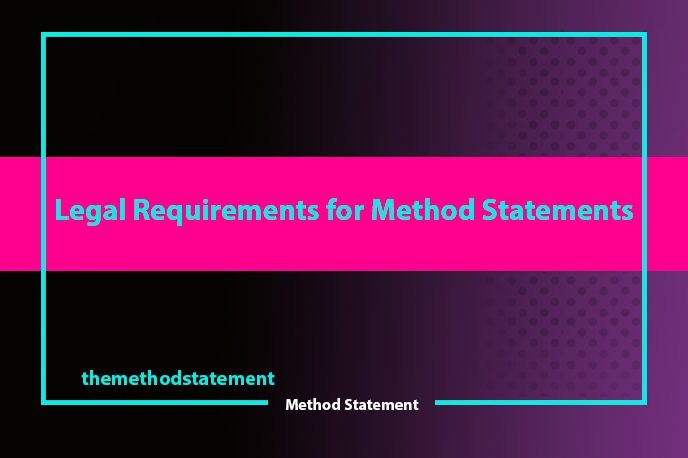In the construction industry, method statements are a legal requirement, and it’s essential that they are produced and followed correctly to avoid any penalties or legal action.
A method statement is a written plan that outlines the way a project will be carried out, ensuring all necessary safety measures are taken and that the project is completed efficiently and effectively.
Table of Contents
What is a Method Statement?
A method statement is a comprehensive document that outlines the steps required to complete a specific task or project, taking into consideration all relevant health and safety regulations. The statement covers all aspects of the task, including the resources required, the methodology to be followed, and the safety measures that must be in place. It is a vital tool for contractors and construction companies, as it ensures that work is carried out safely and efficiently.
Why are Method Statements Required?
Method statements are required by law as part of the Construction (Design and Management) Regulations 2015 (CDM), which governs health and safety in the construction industry. The regulations state that contractors must produce method statements for every project they undertake and that these statements must be followed throughout the project. Failure to comply with the regulations can result in significant penalties, including fines and legal action.
What Should a Method Statement Include?
A method statement should include a detailed description of the task to be completed, including the methodology, equipment, and resources required, and the necessary safety measures. It should also include a risk assessment, identifying any potential hazards and the measures to be taken to mitigate these risks. The statement should be tailored to the specific project, taking into account any site-specific risks or requirements.
How to Create a Method Statement
Creating a method statement requires a thorough understanding of the task to be completed, as well as an awareness of relevant health and safety regulations. The following steps can be followed when creating a method statement:
- Conduct a risk assessment of the task
- Identify the resources and equipment required
- Outline the methodology to be followed
- Identify and describe the necessary safety measures
- Review the statement to ensure it is complete and accurate
The Benefits of Following Method Statements
By following a method statement, contractors and construction companies can ensure that work is carried out safely and efficiently, reducing the risk of accidents and avoiding costly penalties. The statement also provides a clear plan for the project, ensuring that everyone involved understands their responsibilities and the steps required to complete the task.
How Can Method Statements Improve Project Outcomes?
In addition to reducing the risk of accidents and avoiding penalties, following method statements can also improve project outcomes in several ways. By having a comprehensive plan in place, projects can be completed more efficiently and effectively, reducing the risk of delays and unexpected issues. The use of method statements also helps to ensure that all stakeholders are aware of their responsibilities, promoting a culture of safety and collaboration
Conclusion
In conclusion, method statements are a crucial component of the construction industry, required by law to ensure that projects are carried out safely and efficiently. Method statements should include a comprehensive plan that outlines the necessary resources, equipment, methodology, and safety measures, as well as a risk assessment.
By following method statements, contractors and construction companies can reduce the risk of accidents, avoid penalties, and improve project outcomes. Method statements promote a culture of safety and collaboration among stakeholders, providing a clear plan for completing tasks and ensuring that everyone involved understands their responsibilities. Overall, method statements are an essential tool for achieving successful project outcomes in the construction industry.
Related Article: Method Statement in Tendering Process
FAQs
Are method statements required by law?
Yes, method statements are required by law as part of the Construction (Design and Management) Regulations 2015 (CDM), which governs health and safety in the construction industry.
What happens if a method statement is not followed?
If a method statement is not followed, it may result in significant penalties, including fines and legal action, as well as increase the risk of accidents.
Who is responsible for creating method statements?
Contractor companies and construction companies are responsible for creating method statements for each project they undertake.
What are the consequences of not having a method statement?
The consequences of not having a method statement can be severe. It can lead to accidents and injuries, which can result in legal action, fines, and reputational damage. In some cases, it can even lead to criminal prosecution if there is a breach of health and safety regulations.
What is a method statement and why is it important?
A method statement is a document that outlines the steps to be taken to complete a task or project in a safe and efficient manner. It is important because it helps to identify hazards, assess risks, and establish control measures to prevent accidents and injuries in the workplace. Method statements are often required by law or as part of contractual obligations to ensure compliance with health and safety regulations.
tag: # Legal Requirements for Method Statements
